The 2022 Midterm Voter Election Poll, conducted by the African American Research Collaborative (AARC), has a nationally representative sample of Native American voters (n=500) that ensures Native American voters are included in discussions about the 2022 election. This post summarizes the main findings from the poll specific to Native American voters.
Native Americans remained solidly Democratic in their voting preferences in 2022, though slightly lower than we observed in 2020. In House races across the country, Native Americans supported Democratic candidates at 56% relative to 40% of Native Americans who reported voting for Republicans. There was a slight decrease in Democratic vote percentage (-4%) relative to the 60% Democratic vote share in 2020, and (-5%) relative to the 61% Democratic vote in 2018. There was a similar percentage of Native American voters who cast their ballot for Democrats in U.S. Senate races. This modest shift in voting behavior is consistent with the historic movement away from the incumbent party in off-year elections and was not large enough to help a red wave materialize in 2022.
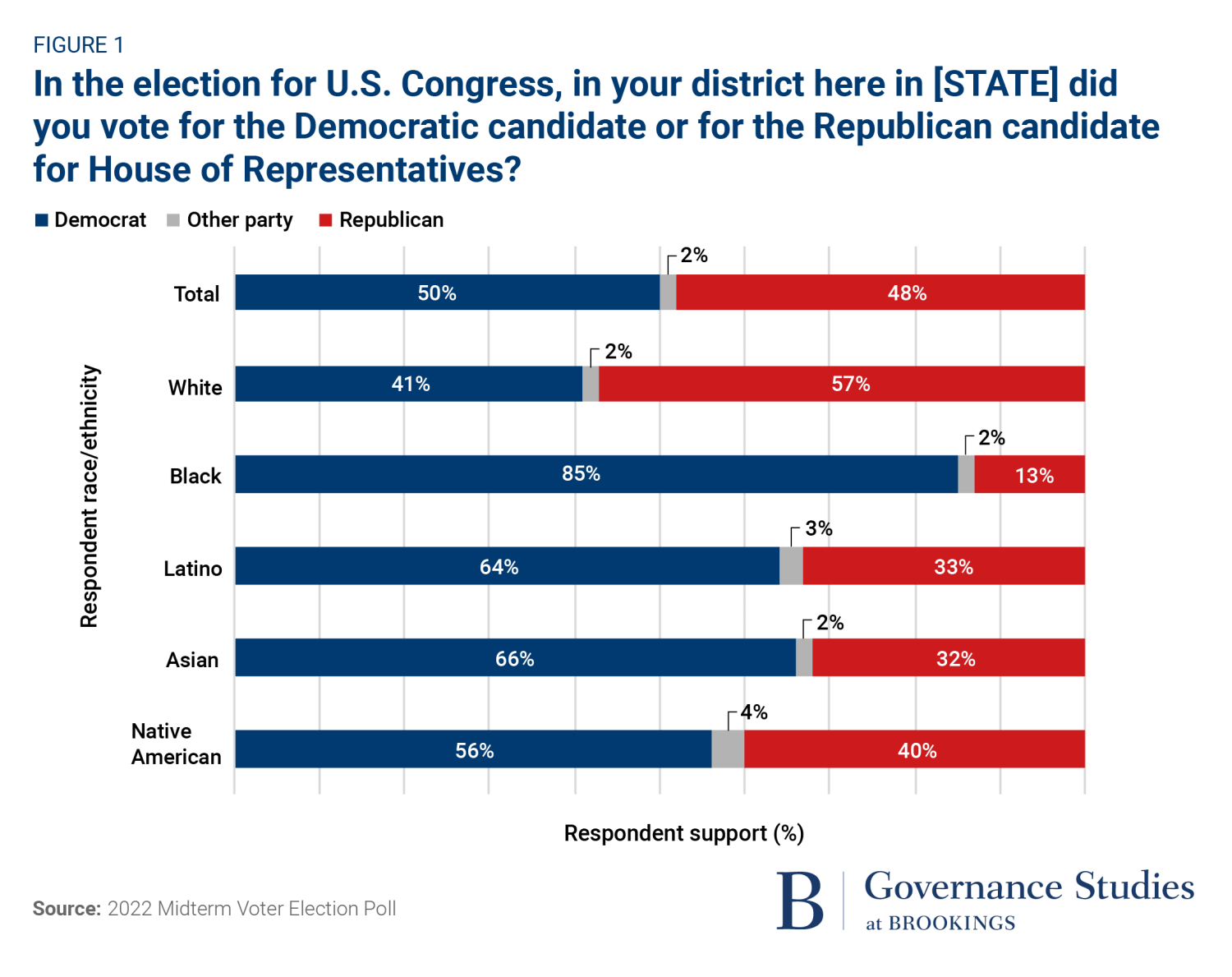
Native American voters were more likely to vote for Republican candidates than Black, Asian American or Latino voters, but were 15% less likely to do so than white voters in 2022, making Native American voters’ part of the coalition of voters who helped undercut the potential red wave in 2022.
Off-year elections are often referendums on the incumbent president and his party. When we look at differences in views toward President Biden it helps explain why Native American voters were more balanced in their vote choice in 2022 than other communities of color. Regarding presidential approval, although Native American voters approve of the job President Biden is doing at a higher rate than white voters (+11%), they were more likely to disapprove than voters from other communities of color—47% among Native American voters.
In an election where reproductive health and abortion was a central theme, potential differences in voting behavior based on gender would be expected, and this was definitely the case for Native American voters in 2022. Native American women were more likely (+12%) to vote Democrat relative to Native American men, with 61% of Native American women indicating that they voted for a Democrat in their U.S. House race. Native American women were motivated to protect reproductive health rights following the Dobbs decision, as 16% of women in the sample reported that reproductive health and abortion was the most important issue that drove their voting decision for Congress. Among Native American women, this only slightly trailed inflation and the cost of living as the most important issue in 2022, and women were twice as likely as Native American men to identify abortion rights as their dominant issue.
The large and growing urban-Indian population has a unique set of priorities and challenges compared to their more rural community members who may live on or adjacent to their tribal lands. Twenty-four percent of Native American voters in the sample live in urban areas, with Native Americans who live in these areas being 14% more likely to support Democratic candidates.
Finally, regarding partisanship, 44% of Native American voters reported that they were registered Democrats compared to 32% who identified as Republicans and 23% as Independents. Partisanship had a marked impact on Native American voting behavior in 2022. Nearly all (98%) of self-identified Native American Democrats supported Democratic House candidates. Similar to 2020, partisan Independents broke for Democrats in 2022, with 46% of Independents supporting Democratic House candidates compared to 37% who voted for Republicans. Only 7% of Native American Republicans voted against their party and supported Democratic candidates.
Native American Voters Continue to Receive Less Attention from the Dominant Parties
One of the themes from 2018 regarding the Native Americans electorate was the investment in mobilizing Native American voters. The survey from 2022 reveals that Native Americans were less likely to be contacted by a candidate, party, or civic organization than other communities of color. As reflected in the figure below, only 42% of Native American voters reported any contact during the 2022 campaign, compared to 51% of Latino voters and 56% of African American voters. Although this is low for all of these groups considering that they are most likely to be on contact lists for candidates and parties, it is a reminder that without higher investment in tribal communities, we will not see this sub-group of the larger electorate turn out and engage in federal elections at high rates. Native American voters who were contacted were also less likely than all other racial and ethnic groups to report their received outreach from the Democratic party.
Lower outreach levels from the Democratic Party was not lost on the Native American electorate, as Native American voters were less likely than other communities of color to believe that the Democratic Party “cares a great deal about addressing issues important to their community” and more likely to believe that the party “does not care too much.” Although Native American voters were less likely to believe that the Republican Party cares a great deal about addressing issues important to them than all other racial and ethnic groups, other than Blacks at 30%, the Democratic Party was not able to capitalize on this opportunity in 2022. Native American voters are less likely to believe that either party is truly committed to advancing their issues and priorities. This should be a wake-up call to both parties and serves as a reminder that Native American communities continue to feel underrepresented in federal campaigns.
Policy Priorities and Views of Major Parties and Political Figures
Native Americans have faced tremendous financial challenges over the past year, including disproportionately high unemployment rates that at one point were nearly three times as high as the national average. It is therefore not surprising that when asked to identify the most important policy issues that drove their congressional vote in 2022, the most common response among Native Americans was jobs and inflation (18%). Behind inflation and jobs was abortion and reproductive health at 12%.
The 2022 Midterm Election Poll has several policy questions specific to the Native American population. The survey reveals that Native American voters have a political context unique to their communities that influences their voting decisions. A vast majority (78%) of Native American voters believe that the federal government has failed to live up to treaties signed with Native Americans, and that the government should return land stolen from Native American tribes.
Native American voters also support policy interventions aimed at addressing the injustices their communities have endured. This includes 82% of Native American voters who believe that the federal government should pay reparations or money to Native Americans who were victims of boarding schools to make up for the hurt they suffered. This is an issue Interior Secretary Haaland has made a priority, most notably by launching an investigation into the federal boarding schools. The majority of Native Americans (83%) also believe that they should receive free tuition to attend state colleges. This has become an increasingly salient issue across the country to address the fact that many universities are built on land stolen from tribes.
In all, Native Americans are a unique and complex electorate, for whom current issues like inflation, abortion and reproductive health are priority issues. Colonization and injustices like land theft and boarding schools are also important issues for this electorate, but they are consistently neglected in political campaigns. This unique data from the 2022 Midterm Election Poll notes that a large majority of Native Americans remain solidly Democratic in their voting preferences. But both parties should pay close attention to the findings from this survey if they are wise, as the survey helps make clear that Native American voters are a critical sub-group of the national electorate who can have marked impact on election outcomes across the country.
The survey data referenced herein was produced independently by a third-party firm, BSP Research on behalf of the African American Research Collaborative. Outside of his work at Brookings, Dr. Gabriel Sanchez serves as Director of Research for BSP Research and was part of the group of scholars who designed and implemented this survey.
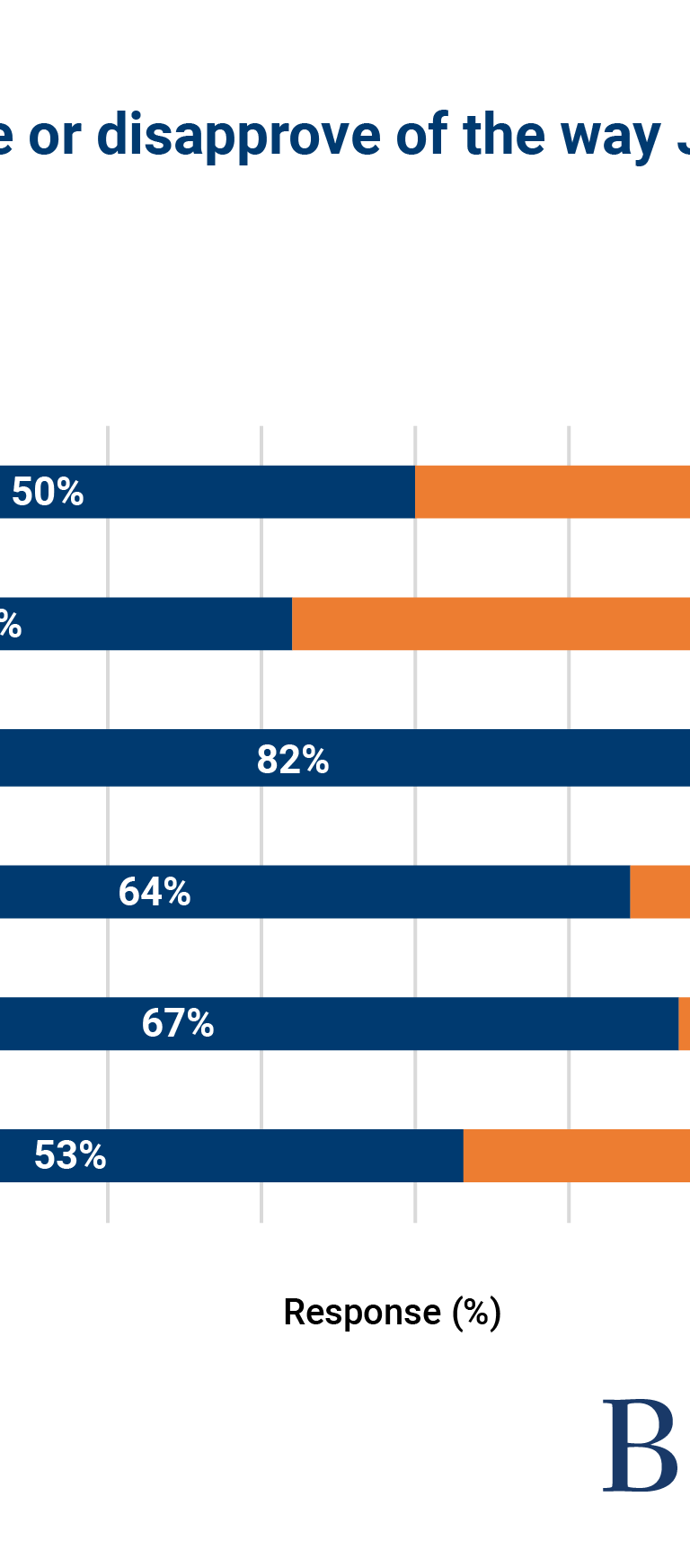
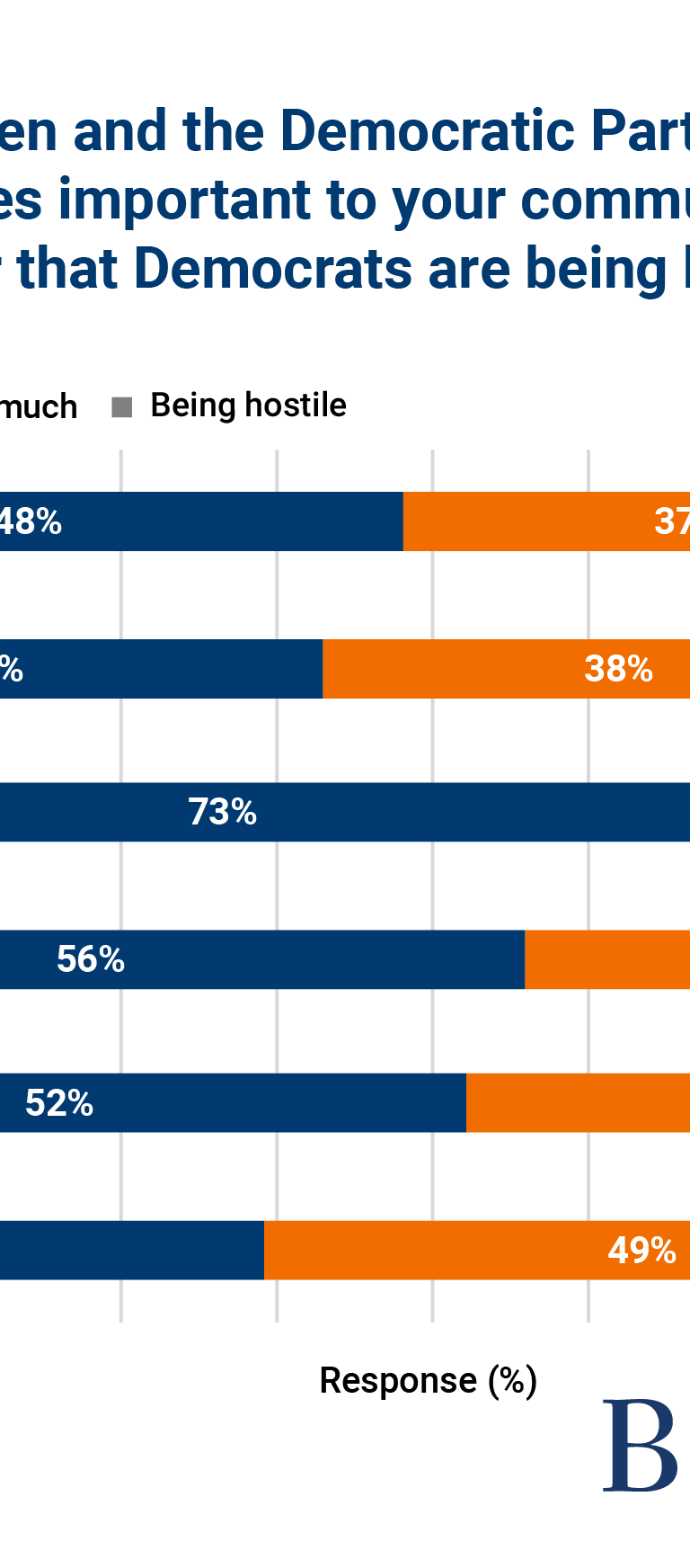
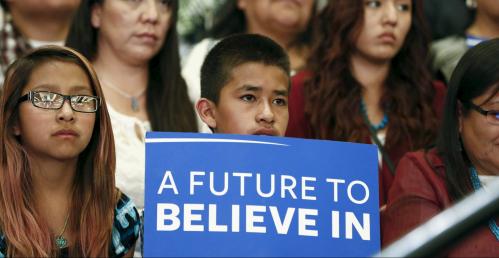
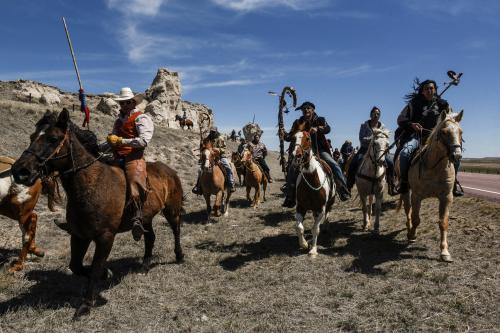
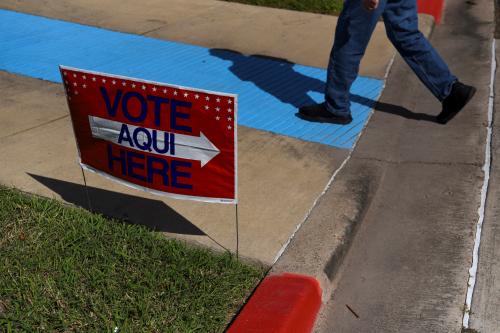





Commentary
Native Americans support Democrats over Republicans across House and Senate races
November 15, 2022